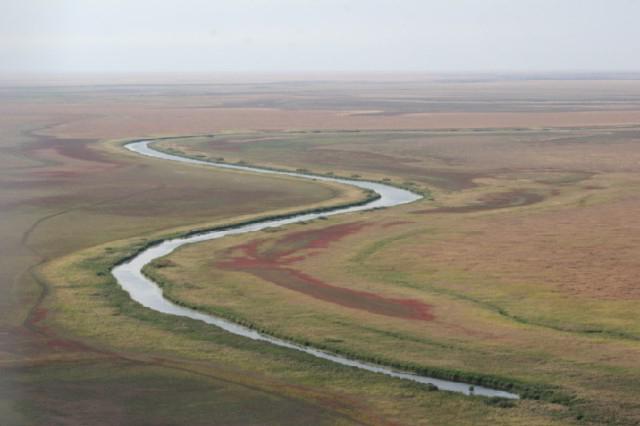The water system of Kazakhstan is a huge network of rivers that stretches across the entire territory of a huge country. Among the many basins of the state, Nura-Sarysu is especially distinguished by its size. It originates in the mountains of Kyzyltas. The largest river in this water system is the Nura. It is about her that will be discussed in this article.
Information about the Nure River
Nura is a river that stretches from the source to the mouth of the Nura-Sarysu basin, on the territory of which about 1 million people live. It flows from the western slopes of Kyzyltas to Lake Tengiz. The length of the river is almost 1000 km (978 km). The water artery has three main tributaries: Ulkenkundyzdy, Sherubay-Nura, and Akbastau.
The area where the Nura River is located belongs to one of the most arid regions of Kazakhstan, as it is located within the Kazakh small hills - steppe territory with small hills. The flood period falls in the spring. In summer, as a rule, the river dries near the source, and in winter it freezes. Also, in the hottest period of the year, the water at the bottom of Nura becomes brackish. With the onset of cold weather in November, the river becomes covered with ice, which begins to break only in early April.
River pollution
Nura is a river that has been contaminated with chemical waste from the plant. So, in the second half of the last century, the Carbide enterprise dumped about 1000 tons of mercury into a reservoir. In this regard, fish caught in separate sections of the river, could not be eaten. However, the situation is not as critical as it might seem at first glance. Mercury is in a sorbed state, which means that it does not pose a serious threat to the life and health of the local population. Nura is a river that has many "friends in misfortune." So, for example, the sea near the Japanese city of Minamata suffered a monstrous degree of pollution. A large amount of mercury discharged into water by one of the nearby plants caused serious damage to the health of local residents.

Purification of Nura since 2001 has become a very important area of activity of the government of Kazakhstan. It was during this period that a large-scale complex of measures was taken to eliminate mercury pollution of the river. The project is financed by the authorities of Kazakhstan together with the World Bank.
River spills
In spring, a river spills. Nura overflows, as the water level rises significantly. The river is one of the largest in Kazakhstan, therefore, its flood often causes great damage to nearby settlements. At the beginning of 2015, a record was set for the speed of rising water levels in the river. It increased by 10 cm every hour. In order to prevent the devastating consequences of the river spill, water is discharged through the locks of the hydroelectric facility on Nura.
The main reason for such a strong spill is a sharp seasonal warming, as well as a large amount of rainfall. Under the influence of warm rains, water from the mountain slopes began to flow into the river.
Local authorities annually prepare for possible Nura spills because of the danger of flooding in nearby cities and towns. The Kazakhstan Committee on Water Resources sends construction materials to such areas, as well as special equipment for emergency evacuation of local residents.
Threat of flooding
In April 2015, a flood did occur. The Nura River overflowed the banks and broke through the embankment erected during the flood to protect nearby territories. According to local authorities, the damage concerns only the fence, not the dam, so there is no serious danger. Only residents of neighboring houses located directly in the breakthrough zone are subject to temporary evacuation.
It was possible to cope with the flood in a relatively short time thanks to special equipment and a large number of workers.
Nura is a river with certain natural features. It is because of them that spring spills occur, as well as summer, autumn and winter drying out at the source. Nearby settlements are flooded almost every year, however, serious damage usually does not happen. Severe floods were recorded only in the middle of the last century. Since the technical breakthrough, they manage to cope fairly quickly, not allowing the river to become a destructive force.